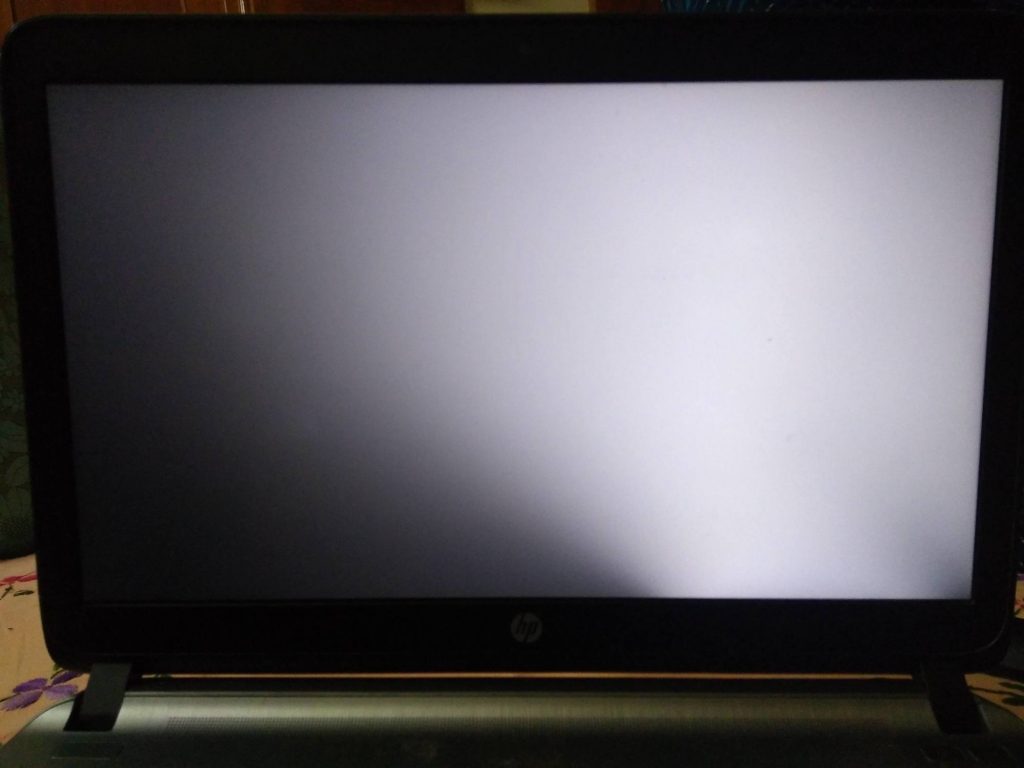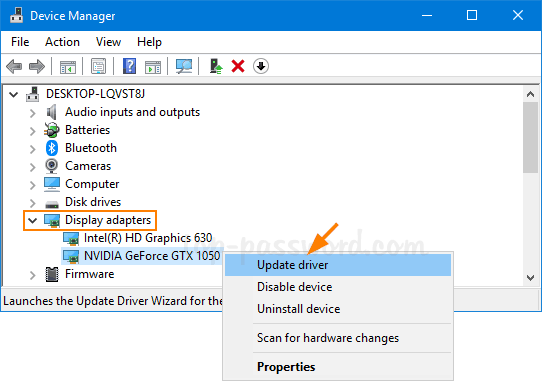Why is My Laptop Display not Working?

If a laptop’s screen starts malfunctioning, it becomes a nightmare for anybody who has all their significant work stored on the laptop. Also, this issue puts a full stop to the urgent tasks you fail to deliver on time, so a laptop display not working isn’t a problem you can entertain for long and need quick troubleshoot options to fix it.
Your laptop display not working could be due to many reasons. And here, we’ll list those causes and the solutions you could give a try for restoring the display to its working condition. But firstly, you must remember to transfer all the data stored in the laptop onto an external USB drive or optical disk to keep your files safe.
1- Power off the laptop:
Powering off the laptop by directly pressing the power button might help because sometimes when the laptop goes into sleep mode, you can’t seem to make the screen work. So, pressing the power button until the laptop shuts down and turning it on after a 10-second break would usually allow the laptop to start and bring your display back.
2- Run a screen test:
Run a screen test by using an extra monitor and attaching it to the laptop using an HDMI cable. If the monitor starts up perfectly, it could mean there’s only some issue with the screen, and the rest of the components work fine. On the other hand, if the monitor doesn’t start, it indicates something’s wrong with the motherboard, and you would need a PC repair service to fix it.
3- Try a hardware reset:
So, when you turn on your laptop and see that the display won’t show anything, i.e., it remains blank, you could try a hardware reset.
Step 1: Shut down the laptop and remove all wires/devices connected to it.
Step 2: Turn the laptop upside down and remove the battery from the battery compartment.
Step 3: Now press the power button for at least 20 seconds and drain the remaining charge to empty the battery.
Step 4: Place the battery back in the compartment and turn the charger on.
Step 5: Now, turn on the laptop. Either the laptop will usually start with the screen working, or the issue will persist.
If the issue doesn’t get resolved, it could be due to an error in the motherboard that would need repairing.
4- Check your settings for fixing the display with dim light:
Check your display settings to ensure the brightness level is set at max. Go to the start button and type “Adjust screen brightness.” Press enter. Set the brightness at max and if your laptop’s display is still dim, restart the laptop. If restarting doesn’t fix it, plug in the AC adapter and see if the brightness increases. In case this method doesn’t work out either, then the inverter board or the backlight bulb must have become faulty. So, you’d need to get the screen checked and repaired by a PC expert.
5- Update your display adapter driver:

Even though your laptop automatically updates all drivers; however there’s a chance your display driver needs to get updated, which is why your display malfunctions. So, go to the start option and type in “Device Manager.” You’ll find “Display adapter,” right-click on it, and you’ll get the option for updating the driver. Click on it and complete the process. Once the update completes, restart your laptop. Your display should work fine after the driver update.
Those whose screen was operating fine before a driver update would need to undo the update to restore the display.
Step 1: Boot in safe mode.
Step 2: Go to the start button, type in “Device Manager,” and click on it.
Step 3: Go to the “Display adapters” and select it to expand the list. Right-click on the item beneath it and select “Properties.”
Step 4: Choose the “Driver” option and click on “Roll Back Driver.” Click on “Yes” when asked to confirm the action.
Step 5: Shut down your laptop and turn it back on after 10 seconds.
If the problem persists, look for other solutions.
6- Look for damaged cables:
One of the reasons why your display doesn’t work and turns black is because of damaged cables. Check if DisplayPort, DVI, HDMI, VGA, and Thunderbolt cables are damaged or connected loosely. If any one of them is broken or damaged, replace it to fix the problem. In case of loose connections, fix the cable’s head firmly inside the port and check if the issue gets resolved.
7- Uninstall third-party antivirus temporarily:
A third-party antivirus could also cause display issues turning your screen blank. So, uninstalling it temporarily might help resolve the problem. Once you uninstall it and the screen functions fine, you can reinstall the antivirus.
Step 1: Boot the windows in safe mode.
Step 2: Go to the start button and type “Apps and Features,” then press the enter key.
Step 3: Select the antivirus software and right-click on it.
Step 4: You’ll get the option “Uninstall.” So, click on it and let the process finish.
Step 5: Restart your laptop.
8- Make sure your graphics card is compatible:
You must ensure that your graphics card is compatible with the version of Windows you currently use. For instance, if you updated to Windows 10 or Windows 11 and then started having display problems, you must check the compatibility issues. You can go to the website of the manufacturer whose card you’re using and search for a compatible graphics card driver if you find yours to be incompatible.
Final Thoughts:
A display not operating correctly or at all is a massive problem for users who rely on their laptops for work. One of the solutions listed above might be able to resolve your display not working issue. However, if none of the procedures help, you must contact a professional for a screen checkup and repair.

